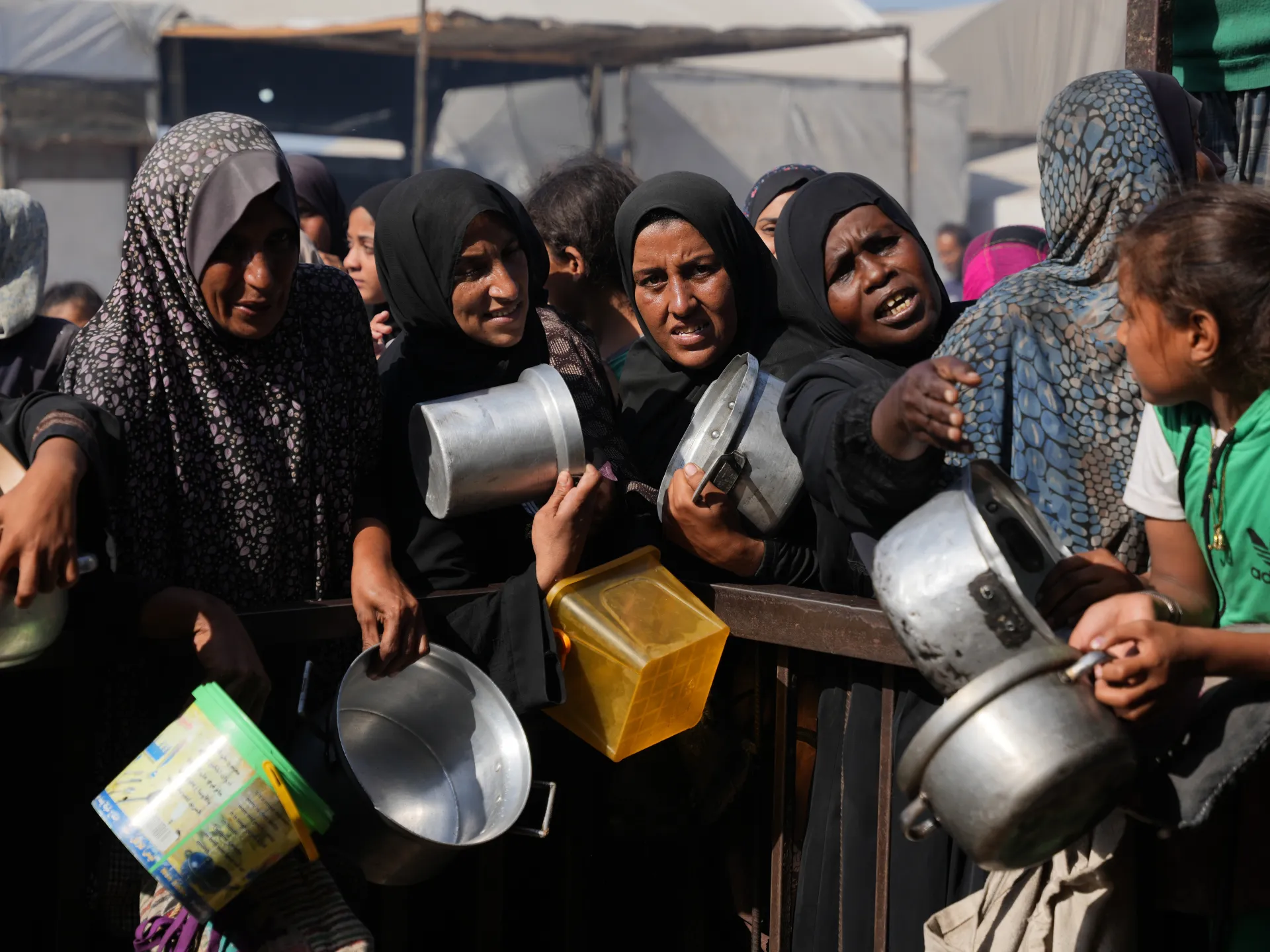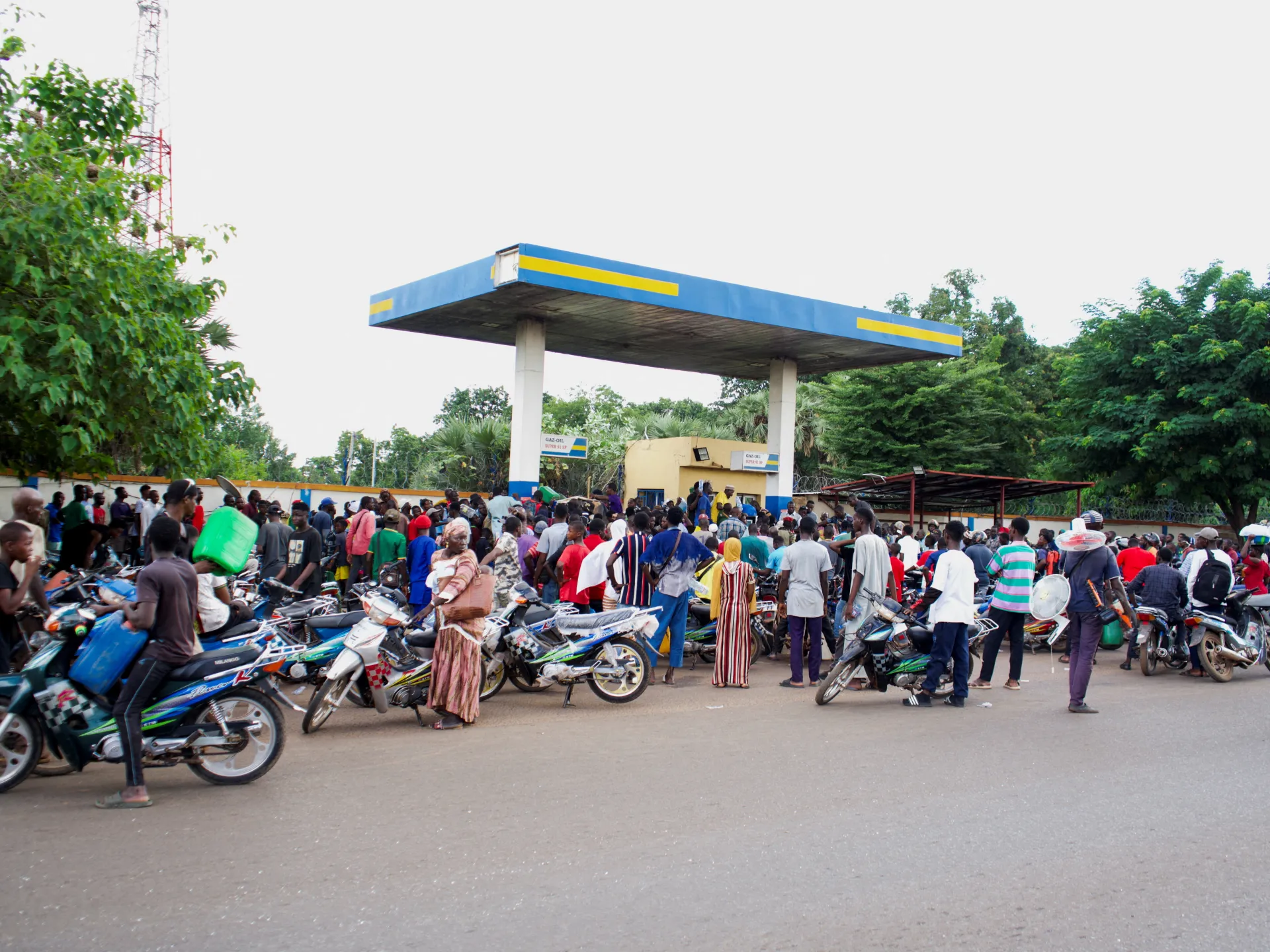Israel still blocking most Gaza aid as military carries out more attacks | Israel-Palestine conflict News
Gaza Government Media Office says just 24 percent of agreed aid allowed into Gaza since ceasefire deal came into force.
Authorities in Gaza say that Israel has only allowed a fraction of the humanitarian aid deliveries agreed on as part of the United States-brokered ceasefire into the enclave since the agreement came into effect last month.
In a statement on Saturday, Gaza’s Government Media Office said that 3,203 commercial and aid trucks brought supplies into Gaza between October 10 and 31.
Recommended Stories
list of 3 itemsend of list
This is an average of 145 aid trucks per day, or just 24 percent of the 600 trucks that are meant to be entering Gaza daily as part of the deal, it added.
“We strongly condemn the Israeli occupation’s obstruction of aid and commercial trucks and hold it fully responsible for the worsening and deteriorating humanitarian situation faced by more than 2.4 million people in the Gaza Strip,” the office said in a statement.
It also called on US President Donald Trump and other ceasefire deal mediators to put pressure on Israel to allow humanitarian aid into Gaza “without restrictions and conditions”.
While aid deliveries have increased since the truce came into force, Palestinians across Gaza continue to face shortages of food, water, medicine and other critical supplies as a result of Israeli restrictions.
Many families also lack adequate shelter as their homes and neighbourhoods have been completely destroyed in Israel’s two-year military bombardment.
A spokesperson for United Nations chief Antonio Guterres said on Thursday that the UN’s humanitarian office reported that aid collection has been “limited” due to the “rerouting ordered by the Israeli authorities”.
“You will recall that convoys are now forced to go through the Philadelphi Corridor along the border with Egypt, and then up the narrow coastal road. This road is narrow, damaged and heavily congested,” Farhan Haq told reporters.
“Additional crossings and internal routes are needed to expand collections and response.”
Meanwhile, the Israeli military has continued to carry out attacks across Gaza in violation of the ceasefire agreement.
On Saturday, Israeli fighter jets, artillery and tanks shelled areas around Khan Younis, in the south of the territory. The army also demolished residential buildings east of the Jabalia refugee camp in northern Gaza.
Al Jazeera’s Tareq Abu Azzoum reported that witnesses in Khan Younis described “constant heavy shelling and drone fire hitting what’s left of residential homes and farmland” beyond the so-called yellow line, where Israeli forces are deployed.
“We have also been told by Gaza’s Civil Defence agency that it’s struggling to reach some sites close to the yellow line because of the continuation of air strikes and Israeli drones hovering overhead,” Abu Azzoum said.
Israeli attacks on Gaza have killed at least 222 Palestinians and wounded 594 others since the ceasefire took effect, according to the Ministry of Health in the enclave.
Israeli leaders have defended the continued military strikes and accused Hamas of violating the ceasefire agreement by not returning all the bodies of deceased Israeli captives from the enclave.
But the Palestinian group says that retrieval efforts have been complicated by widespread destruction in Gaza, as well as by Israeli restrictions on the entry of heavy machinery and bulldozers to help with the search.
Late on Friday, the International Committee of the Red Cross said it had transferred the bodies of three people to Israel after they were handed over by Hamas.
But Israel assessed that the remains did not belong to any of the remaining 11 deceased Israeli captives, according to Israeli media reports.


